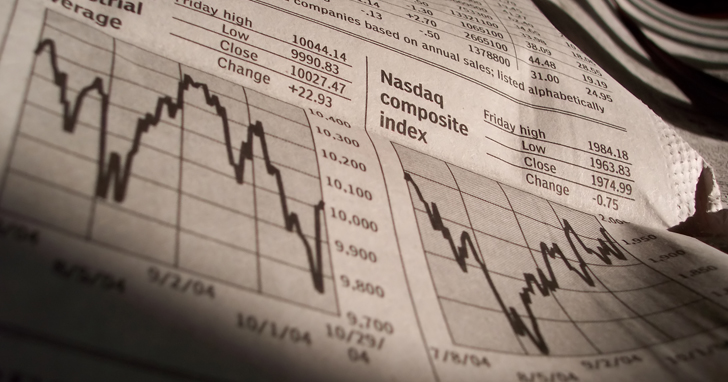Learn
Investing 101: What Are Portfolio 'Airbags?'

Anytime you drive a car, you take on the risk that you may get into an accident between point A and point B. You can't completely remove that risk, but you can reduce it through a number of safety measures, like anti-lock brakes and a back-up camera. In a worse-case scenario where an accident cannot be avoided, you still have protective features like airbags.
This same concept can be applied to other activities that carry risks — like investing. In this context, the "accident" is a market event that causes your portfolio to lose value.
While you can't avoid those events, you can protect against worst-case scenarios, and investment portfolio "airbags" can help.
 If you're investing exclusively in U.S. stocks, your portfolio is less diverse than it could be, since U.S. stocks make up only half the global market.
If you're investing exclusively in U.S. stocks, your portfolio is less diverse than it could be, since U.S. stocks make up only half the global market.
What are portfolio airbags — and why would you want them?
Portfolio airbags are like strategies that can help you minimize potential losses when the market goes down. Portfolio airbags can be passive safety measures, like maintaining a diversified portfolio, or more active strategies, such as adjusting the proportion of different assets you hold — or even selling a portion of your portfolio to hold as cash depending on different triggers.
While there is still hearty debate about the value of active versus passive management,1 the real defining feature of portfolio airbags is that you establish the set of protocols before you need them. In this way, portfolio airbags can help reduce the harm done to your portfolio by helping you stay the course rather than panicking and doing something impulsive in response to a bear market. No matter what happens, you are just responding based on your pre-set plan that reflects your investment goals, philosophy, and comfort level.
What are some examples of portfolio airbags?
Here are some airbag options financial experts like to use with investment portfolios:
- Diversify by asset class2: You probably know being invested in 100% equities is very risky, and you can mitigate that risk by diversifying the asset classes that you hold in your portfolio. For example, you may want to have a mix of stocks and bonds that's based on your risk tolerance (holding most stocks if you can stomach higher risks). You may also want to look into commodities or alternative investments, too.
- Diversify globally2: You can take diversification a step further by diversifying across various international markets too. Many people suffer from "home country bias,"3 which causes them to hold far too much of their portfolio in their own country's securities. This is an issue because that doesn't represent the entire stock market. U.S. stocks, for example, only make up about 50% of the global market.
- Adjust your portfolio based on volatility: One airbag can be a set range of "normal" market volatility that you will accept and tolerate. This airbag can be deployed when volatility exceeds the set range. When it goes off, it could mean selling to increase the amount of cash in your portfolio.
- Set an order of priority for selling assets in your portfolio: Another airbag could be a pre-set list of assets that you will sell if certain events happen, like a market drop of a certain percentage, starting with the most risky and moving to least risky.
- Increase or decrease exposure to equities depending on benchmarks you set: You can set up a rules-based system to follow before you begin investing, based on your investment philosophy. If one of your markers is triggered, you can increase exposure to stocks (or decrease them, depending on the situation).
How to get the right portfolio airbags installed
The only major downside of portfolio airbags? This is a more complex, sophisticated investment management strategy and may be best left to experts who deeply understand market movements.
Without that knowledge, you may deploy your airbags at the wrong time. And just like in a vehicle, improper use of these safety measures can cause more harm than they prevent.
The good news is that the right financial advisor may be able to help you implement this strategy correctly and safely. If you're ready to enjoy more peace of mind knowing you installed a little bit of extra protection into your portfolio, visit a Synovus branch and talk with your Synovus financial advisor who can help you create the airbags designed to keep your nest egg safe.
Important disclosure information
This content is general in nature and does not constitute legal, tax, accounting, financial or investment advice. You are encouraged to consult with competent legal, tax, accounting, financial or investment professionals based on your specific circumstances. We do not make any warranties as to accuracy or completeness of this information, do not endorse any third-party companies, products, or services described here, and take no liability for your use of this information.
- Coryanne Hicks, "Active vs. Passive Management: Which to Use and When," U.S. News & World Report, published May 20, 2019, accessed April 17, 2020. Back
- Diversification does not ensure against loss. Back
- Adam Sarhan, "Do You Suffer From Home Country Bias?", Forbes, https://www.forbes.com/sites/adamsarhan/2018/04/10/do-you-suffer-from-home-country-bias/#2e00aa3c3be2, last updated April 10, 2018, accessed April 16, 2020. Back

